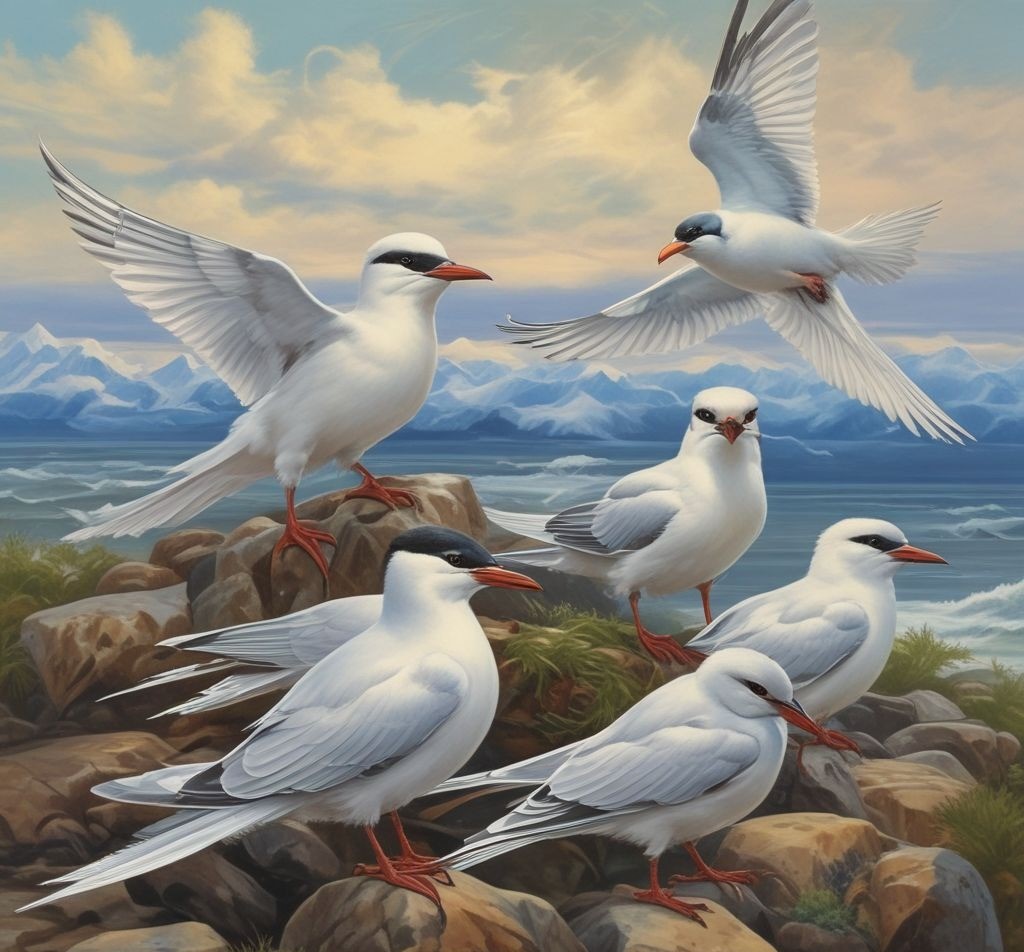🐦 All About the Arctic Tern
The incredible long-distance traveler of the skies! ✈️❄️
📖 Quick Overview
| Feature | Details |
|---|---|
| Animal Name | Arctic Tern |
| Habitat | Arctic and Antarctic coastal areas |
| Food | Fish and small sea creatures (Carnivore) |
| Group Name | Colony or flock |
| Baby Name | Chick |
| Special Skill | Migrates the longest distance of any bird |
| Danger Level | Least Concern |

🌟 What Is an Arctic Tern?
The Arctic Tern is a small, graceful seabird known for flying huge distances every year.
They have:
- White and gray feathers with a black cap on their head
- Long wings that help them glide for thousands of miles
- Sharp beaks for catching fish
They are amazing travelers and spend more time flying than almost any other bird!
📍 Where Do Arctic Terns Live?
Arctic Terns breed in the Arctic but travel to the Antarctic for the winter.
🗺️ Places They Live:
- Arctic coasts and islands in summer
- Antarctic coasts in winter
🌊 Habitat:
- Rocky shores
- Coastal cliffs
- Islands and tundra near water
🍽️ What Do Arctic Terns Eat?
Arctic Terns are carnivores that eat mostly:
- Small fish
- Tiny shrimp and krill
- Insects near the water surface
They dive into the water to catch their food with quick, sharp beaks.
👨👩👧👦 Family and Groups
Arctic Terns nest in large groups called colonies to stay safe from predators.
👶 Baby Arctic Tern = Chick
Chicks stay in nests made of stones and grass until they can fly.
✈️ World’s Greatest Migrator!
Arctic Terns travel up to 44,000 miles each year—that’s like flying around the Earth twice!
They fly from the North Pole to the South Pole and back every year, experiencing two summers!
💡 Fun Facts About Arctic Terns
- They have more daylight than any other animal because of their long migrations.
- Arctic Terns can live over 30 years!
- They are excellent fliers and can glide for hours without flapping.
- Their sharp calls help warn others about danger.
🛑 Are Arctic Terns in Danger?
Arctic Terns are mostly safe but face some threats:
- Pollution in oceans
- Climate change affecting their food supply
- Habitat loss in breeding areas
💚 How Can We Help?
- Protect clean oceans and coastlines
- Support bird conservation groups
- Learn and share about migratory birds
✏️ Activity: Plan Your Own Migration!
🎨 Imagine you’re an Arctic Tern flying from the North Pole to the South Pole.
- What animals might you see?
- What places would you visit?
- Draw your migration journey and share your story!
✅ Summary
| 🗂️ Category | 🐦 Arctic Tern |
|---|---|
| Type | Bird |
| Diet | Carnivore |
| Habitat | Arctic and Antarctic coasts |
| Group | Colony or flock |
| Special Skill | Longest bird migration in the world |
| Danger Level | Least Concern |